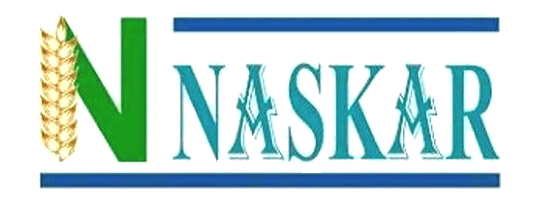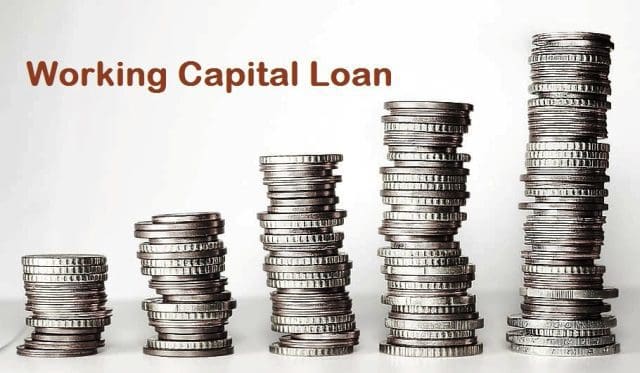Working Capital Loan:
A business owner should understand his business thoroughly, his company’s sales cycle, and credit transactions. There are few factors that should be considered for the working capital loan like sales, length of the operation cycle, credit periods, nature of the business, etc. Before applying for a working capital loan you should know what working capital is, working capital loan types, what is the eligibility for the loan? What are the documents required for the loan?
Working capital is the money which is required to manage day to day operation of business organization. Working capital is the difference between a company’s current assets and current liabilities. Current assets are cash in hand, cash at bank, account receivable, raw material, working progress, finished stock, and other assets that can be liquidated in less than one year. Current liabilities are the account payable, rent, electricity, tax payable, and short term debt which has to pay within 12 months.
So working capital loan is a loan which is taken to finance day to day operation of a company. The working capital loan is not taken to purchase fixed assets or invest in the long term. Working Capital Loans can be secured or unsecured both. A working capital loan is a very short term loan. Therefore it’s only used for short term expenses.
Working Capital Loan types:
There are different types of working capital loan is available in the market. What types of loan a customer will get that depends on customer business profile or business activities? Example- If you have a production-oriented business you can get a Cash Credit loan, but if you run an export and import business you can get packing credit or post-shipment credit.
Different types of working capital loan describe below:
- Cash Credit Loan:
Cash credit is a loan that is used to financing day to day operation of a company. A business owner avail who avail cash credit loan can withdraw money from a bank account without having a credit balance. The businessman can use cash credit loans for any kind of operational expense like purchase raw material, payment wages, electricity, and settlement short term debt, etc. Collateral security is needed to take a cash credit loan. Cash credit loan can be taken for 12 months period. After 12 months it can be renewed also. More information…
- Bank Overdraft:
Generally, banks offer overdraft facilities to those customers who maintain good average balance and regular transection in their current accounts. An additional limit set for this account. Example – A businessman maintains rupees five lakhs average balance in his current account, the bank can offer him additional rupees one lakh over-limit in his current account. That means the businessman can withdraw 1 lakh rupees more after withdrawn his all deposited money. He has to pay interest on withdrawn amounts only. The money has to be returned within 15 to 30 days. But customers can withdraw the money again.
Another kind of overdraft facility: Nowadays banks offering some other types of overdraft facilities. A company can apply for a cash credit loan to the bank. But it does not maintain any kind of stock. In that case, the bank can offer an overdraft facility instead of a cash credit loan. The customer gets a running account like cash credit. He can withdraw money from the account as per his business requirements. He has to pay interest on the withdrawn amount not on the entire limit. If you apply for an overdraft facility you will get loan up to 60% to 70% of your collateral value of the security.
- Bank Guarantee:
You can avail of this pre-approved loan by offering your residential and commercial property as security. Bank guarantee is promised from a bank if a particular borrower defaults on the payment, the bank will cover the loss. Bank guarantee is provided to do business within the country.
- Letter of Credit:
A letter of credit is a payment mechanism used in international trade to provide a financial guarantee from a customer’s bank to an exporter of goods. A letter of credit is a document sent from a credit institution which guarantees that a seller will receive a buyer payment on time and for the full amount. A letter of credit is mainly used in international business. It is very helpful where a buyer and seller may not know each other personally and are separated by distance. Lending institutions take charges for issuing the letter of credit.
- Bill Discounting:
Bill discounting is an arrangement where the seller takes an amount of sales bill from the bank or NBFC before its credit period. Such a bank or NBFC works as an intermediary here. The bank charges a fee for this service. Then, this bill is presented seller’s customer and the full amount is collected by the bank or NBFC. Bill discounting is also known as invoice discounting or purchase of bill.
- Line of Credit:
A line of credit is a pre-decided borrowing limit that can be used at any time. A borrower can withdraw money until the limit is reached. If he repays the amount it can be withdrawn again. Line of credit is a blessing for those who need financial assistance regular basis. If you get a line of credit from the bank then you no need to withdraw the entire amount of the limit. You will withdraw money as per your requirement. You have to pay the interest on the withdrawn amount not for the entire amount of the limit. You no need to pay EMI like a regular loan. You just need to return your withdrawn money within a given time limit with interest.
- Packing Credit:
Packing credit is a loan provided to an exporter to finance the product manufacturing or procurement before shipment. This is a very short term loan. The maximum time period can be 6 months. Packing credit is provided to purchase raw materials, process, manufacturing, and packing and transport the required goods. This loan is provided to exporters generally.
- Post Shipment Credit:
Post Shipment Credit is a kind of loan provided by the bank to an exporter against a shipment that has already been made. Post shipment credit may be secured or unsecured both. Documents of the title of goods exported will be treated as securities.
Eligibility for Working Capital Loan:
Eligibility criteria for the working capital loan vary from bank to bank. It also depends on working capital loan types.
- Most of the bank requires a minimum age of at least 25 years for the business owner. Although this criterion is very bank to bank.
- Three years of business vintage is good for a working capital loan. Few banks may provide working capital loans less than three years of business vintage. But in that case, other parameters will be high like sales turnover and banking turnover have to be very good.
- Most of the lender expects at least two years of IT files. Although few lenders can take one year IT files.
- A borrower has to provide collateral security in case of a secured working capital loan.
- Generally, credit institutions expect at least 70% to 80% banking transaction on total sales. Few lenders may consider the banking turnover too.
- Customers should have a good credit history to take an unsecured working capital loan.
Benefits of Working Capital Finance:
This is a very short term loan. Every business needs some short term capital. If you need additional funds to run your business for the short term then working capital loan is ultimate. There is a fixable withdrawal facility in this kind of loan. When you required fund you can withdraw and when you available fund you can deposit the money in your loan account. You have to pay the interest on the withdrawn amount of loan, not the entire limit. You no need to pay EMI regularly like a term loan.
What are the documents required for Working Capital Loan?
KYC documents of Proprietorship Company:
- Pan card and Aadhaar card and passport size photo (Mandatory documents)
- Address Proof: (any of the below)
- Voter card
- Aadhar Card
- Driving license
- Electric bill
- Telephone bill
- Passport etc.
- Ownership proof either office or resident (latest electricity bill or property tax)
Business proof:
- Trade license (last three years).
- P Tax registration
- GST registration certificate
Financial and Income proof:
- Last 2 Years IT files. It includes ITR, computation, P&L account, balance sheet, 3CA & 3CD (in case of audited file)
- All existing loan documents (if any)
- Six months to one-year current account statements.
- GST Return for the last one year.
- Estimated and projected balance sheet and profit and loss account.
- Work orders copy (6 months old and in hand) (if any)
Property documents:
a) Deed
b) Prior deed
c) Mutation certificate
d) Sanction plan
e) Conversion certificate
f) latest property tax receipt
### Property documents are required in a secured working capital loan. It is not required in an unsecured working capital loan or collateral-free loan.
Partnership Company:
Above all documents are required for Partnership Company. Additional documents are company PAN card and partnership deed and KYC documents for all partners.
Private Ltd. or Limited Company:
Above all documents are required as like Proprietorship Company. Additional documents are PAN card of the company, MOA / AOA, and KYC documents for all Directors.
$$$ Above basic documents are required for a working capital loan. Few banks may ask for customer-specific additional documents. Some credit institutions may ask very fewer documents for short term unsecured working capital loans.
Rate of Interest:
Working capital loan interest rates may vary from bank to bank. The interest rate also depends on working capital loan types. The unsecured working capital loan interest rate is higher than the secured working capital loan comparatively. Unsecured working capital loan available in the market between 10% to 20% interest rate. Secured working capital loan interest rates may be offered 8.5% to 15% depending upon the bank MCLR. Most of the bank charges a different interest rate on the basis of the customer profile. They may offer lower interest rates to good profile customers.
You may check the interest rate from websites. Some websites provide a rate of interest of all the banks and NBFCs like bankbazar.com, paisabazr.com, and wishfin.com, etc. You may visit to check the interest rates from banks’ websites. But the best option to know the rate of interest is direct calling to banks or credit institutions. Credit Institution changes its interest rate frequently depending upon the MCLR and repo rate.
Working Capital Loan provider in Kolkata:
- ICICI Bank
- HDFC Bank
- Axis Bank
- State Bank of India
- Union bank
- Bank of Baroda
- Kotak Bank
- Indusind Bank
- Punjab National Bank
- Uco Bank
- Yes Bank
- Federal Bank
- Bank of India
- Allahabad Bank
- United Bank of India
- Indian Overseas Bank
- Bajaj Finance
Almost all banks in India have their office in Kolkata. All Nationalised Banks and Private Banks provide working capital Loans.
Please let us know to comment below if you like anything more regarding working capital loans. You can write in the comment box if you see anything wrong here.
Read Also-
- Cash credit loan eligibility
- How to get a business loan?
- Why should you appoint a loan consultant for your business loan?








Pingback: What are the different types of loans?
Pingback: Tips to Get Working Capital Loan from Bank Quickly
Pingback: Enhance Working Capital Loan - Naskar Financial Services
Pingback: Cash Credit Loan :How does it Works ? - Naskar Financial Services
Pingback: Which Bank is the best for MSME Loan in 2022?
Pingback: How to get MSME Loan 2021 - Naskar Financial Services
Pingback: How to get Business Loan in 2020 - Naskar Financial Services